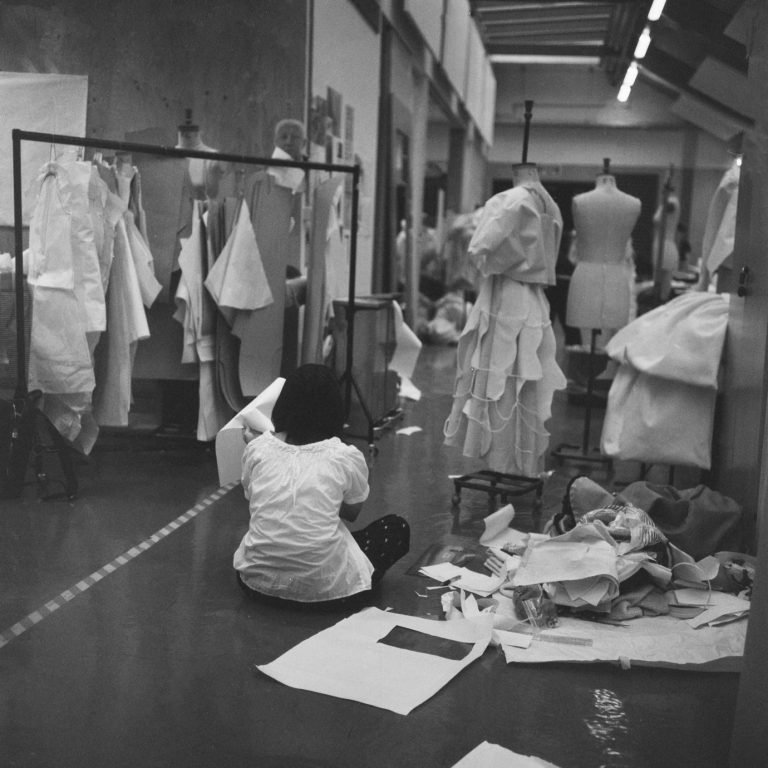First things first: every single person on the planet is creative to some degree. Studies prove that the thinking processes used by an average person are not different from those used by the Charles Darwins of the world. The difference lies within the creative product, the outcome of these thoughts. It is the attitude towards existing problems, mostly towards life, that separates the wheat from the chaff. And this is where perfectionism comes into play.
“I always feel I could have done more!”
Probably the most common answer to the question of one’s biggest weakness in job interviews is stating to be a perfectionist – because who wouldn’t want an employee who strives to be superb? Primarily, however, and particularly in relation to creativity, the term perfectionism connotes negative feelings. The continuous thrive to create nothing but the best is simply a euphemism for eternal self-doubt. To a survey by @1granary, which saw close to 3,700 respondents, 82% answered that they have never felt as if a project was perfect after finishing it. Simultaneously, 98% perceives their perfectionism as harmful rather than helpful. A creative perfectionist is often set up for failure.
“I have done my best when I have got no more tears left to cry, slept an unhealthy amount, and gone bankrupt.”
Perfectionism is a combination of one’s inclination to set extremely high personal expectations combined with overly critical self-evaluation. Generally, this tendency can be divided into normal and over-anxious neuroticism, which defines how tolerant one is towards making mistakes. How does this translate into creativity? According to scholars, creativity is fuelled by individual differences, different perspectives, and the risk of the unknown. Especially when it comes to the arts, the differences to existing creations are essential to original ideas. A creative perfectionist, or respectively the ever sceptic, will always try to compare their work to arbitrary yardsticks or illusions of what is perfect. And thus, limit the ability to be innovative.
“Being the best means that I am not feeling average in comparison to other people.”
This is the theory. But how does it feel to battle voices of self-doubt continuously? Particularly when one is exposed to a never-ending stream of perfectly curated content on social networks, which for perfectionists are not so much an illusion of perfection anymore? Responding to our @1granary Instagram stories, an astonishing number of creatives associate having done their best after a project with a feeling of exhaustion. One follower even admits, “I have done my best if I have given 200%.” Considering that giving 100% is already representative of the physically possible maximum, the answer is remarkably reflective of the pressure creatives put on themselves.
On that same note, a long-term study by Curran and Hill examined the development of perfectionism from the 1980s to 2016. They found that the age groups who grew up being exposed to social media experienced record-setting levels of mental health issues. Next to depression and forms of anxiety, the participants demonstrated a pathological fear of negative social evaluation that focuses on deficiencies and sensitivity to criticism and failure. Sound familiar? The characteristics are close to identical with those defining a perfectionist.
“I tend to seek validation instead of trying to perfect my craft.”
Social media created a generation of multidimensional perfectionists. So if one is a perfectionist by nature already, it is safe to say that social networks can become the biggest enemy to a healthy mindset, and to creativity. “The overall media show perfectness, which urges other people and me to do it, too,” responds one follower. At the same time, another says, “There is this pressure that leads to anxiety and, in return, more pressure. It is certainly not good for the creative flow.” Some may say that it is the same old story to blame social media for society’s problems. In the end, it is not social media but instead how people use and consume it that sets unrealistic standards as well as the pressure to live up to them.
“It is a vicious cycle of self-loathing as I do not think I can ever match up.”
Circling back to the creative perfectionist, the continuous dissatisfaction with a project does not necessarily imply an unhealthy relationship to one’s sense of self. In fact, striving to achieve an outcome that is as close as possible to the ideal form one has in mind pushes creatives to innovative solutions. In the end, imperfection and dissatisfaction are the factors forcing one to become creative in the first place. Thus, it makes not perfectionism but instead the feeling of never being good enough the enemy to a healthy mindset and true excellence, really.
“I wish that the designers I admire would look at my work and think, ‘Fuck, that is good.’”
One of the biggest lessons learned from great geniuses’ tragedies is this: Young creatives, and creatives in general, should allow themselves not to be good enough to certain people. Even if they are not in the lucky position of anonymity anymore and there are loads of expectations. There will always be critics, but creatives need to give themselves grace. Perfectionism is subjective, and ‘the best’ is always an individual perception. Setting unrealistic standards as arbitrary yardsticks will limit the creative possibilities. Self-doubt will hinder originality just because it is not comparable to existing excellent creations. Indeed, everyone is entitled to having highs and lows. Even the greatest have dark moments, which does not make them less significant. Next time you doubt yourself just think: Are you a perfectionist or does your work depend solely on external validation?









